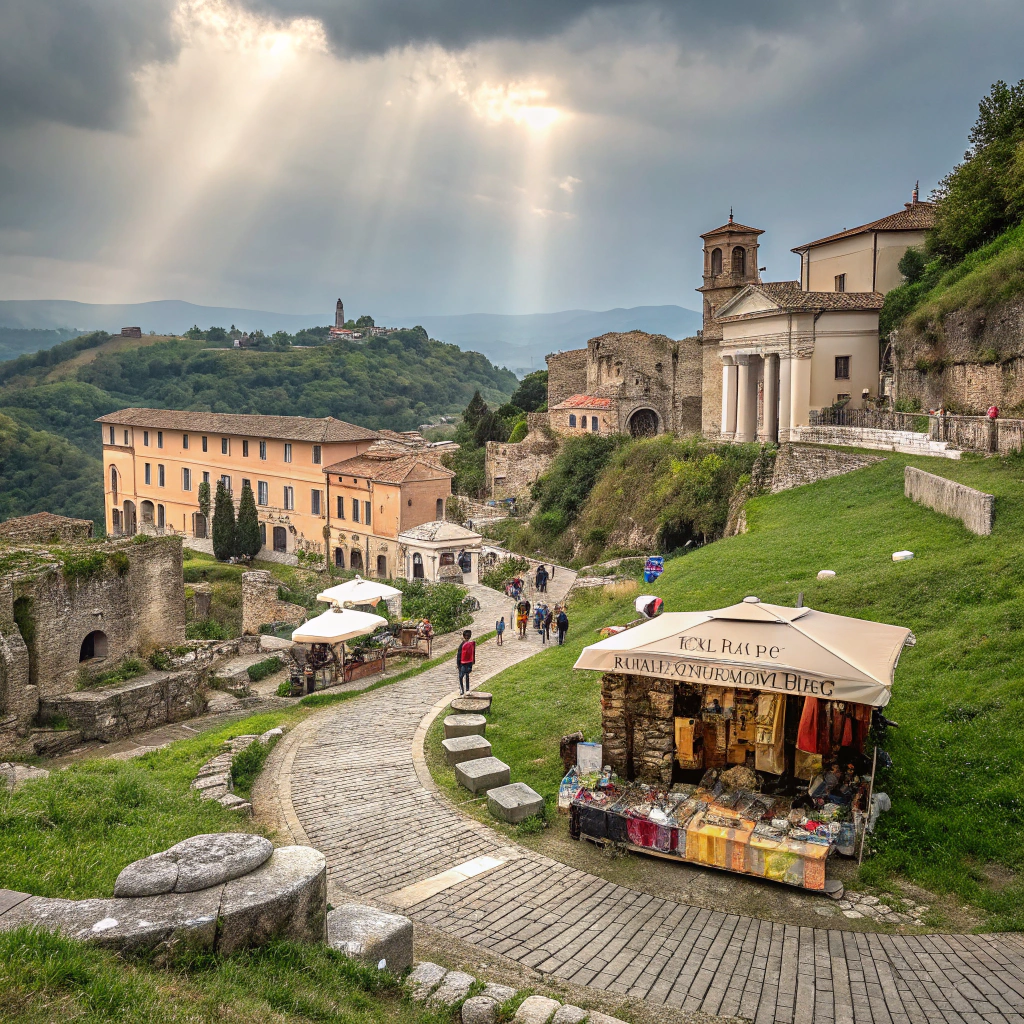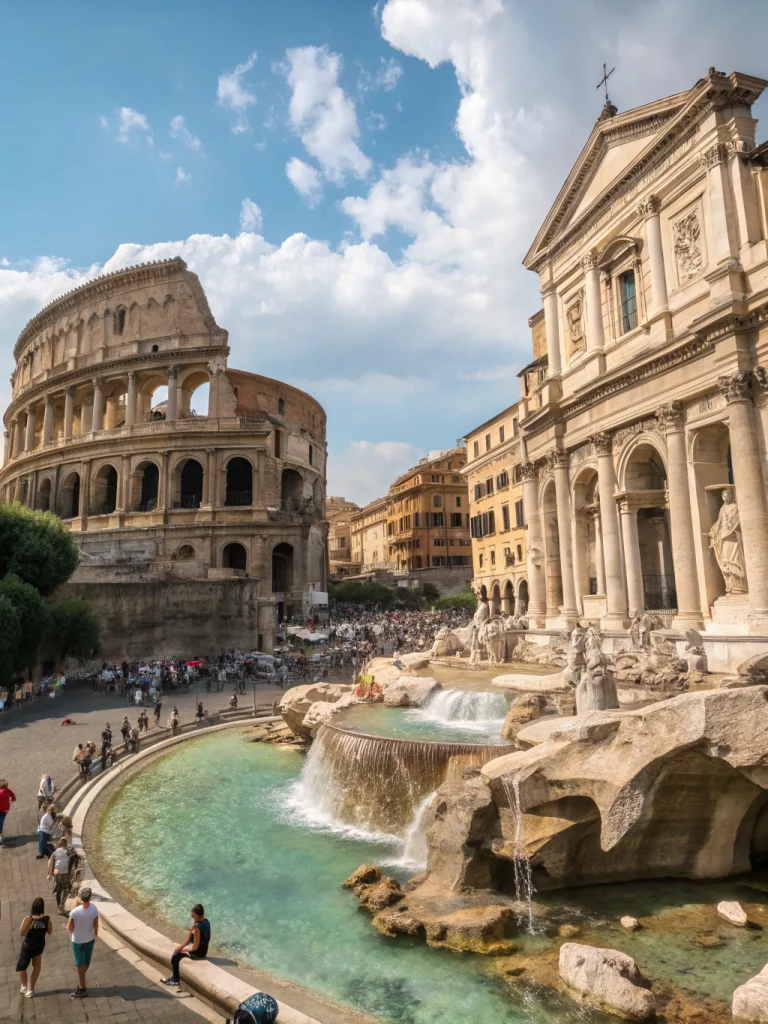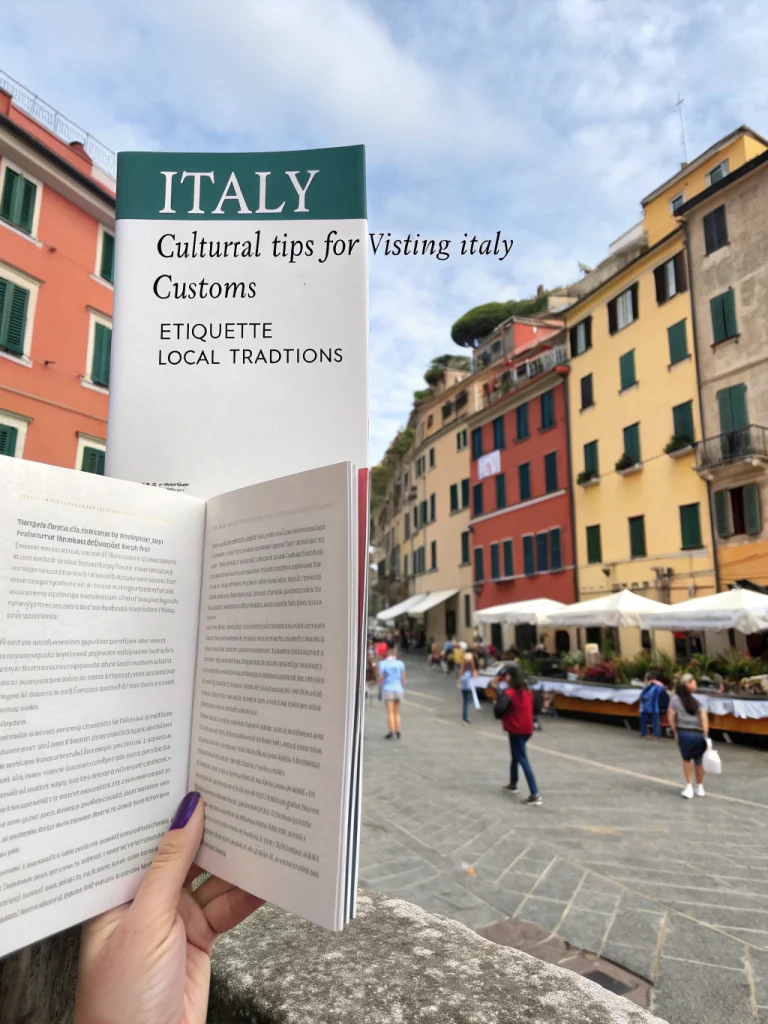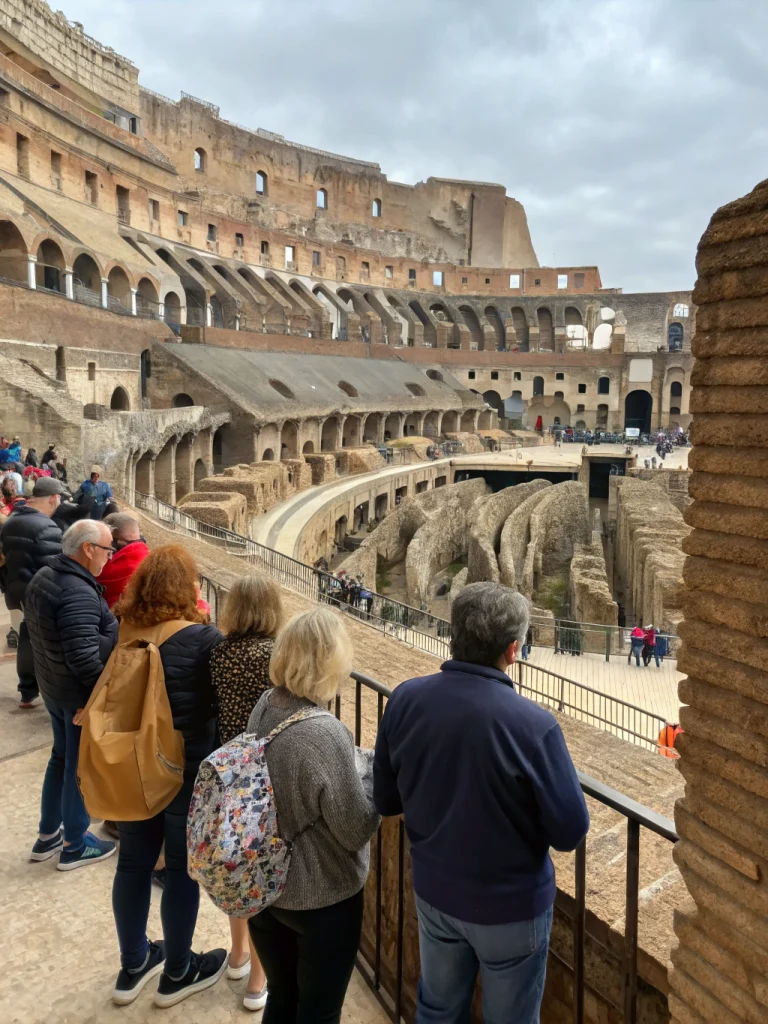Best Places to See in Italy: 7 Hidden Gems You Can’t Miss

Introduction
Did you know that Italy receives over 65 million visitors annually, yet 90% of them visit the same overcrowded destinations? While Rome, Venice, and Florence capture most headlines, Italy’s best places to see extend far beyond these tourist magnets. The country harbors countless hidden gems that offer authentic Italian experiences without the crushing crowds or inflated prices.
Recent travel data reveals that savvy travelers are increasingly seeking unique destinations that showcase Italy’s diverse landscapes, rich history, and vibrant culture. These lesser-known treasures represent some of the best places to see in Italy for those wanting to experience the country’s true essence. From medieval hilltop towns to pristine coastal villages, Italy’s hidden gems promise unforgettable adventures for every type of traveler.
Why Visit Italy’s Hidden Destinations?
Italy’s hidden gems offer something that mainstream destinations simply cannot: authenticity. These places maintain their traditional Italian character, where locals still gather in ancient piazzas, family-run trattorias serve recipes passed down through generations, and centuries-old traditions remain alive.
Take Matera, for instance, where travelers discover a city carved entirely from rock, inhabited continuously for over 9,000 years. This UNESCO World Heritage site costs 60% less to visit than Rome while providing an equally profound historical experience. These destinations prove that Italy’s best places to see aren’t always the most famous ones.
The emotional connection travelers form with these hidden gems often surpasses their experiences in crowded tourist centers. Here, you’ll share espresso with locals, stumble upon medieval festivals, and photograph landscapes without fighting crowds for the perfect shot.
Best Time to Visit Italy’s Hidden Gems
Spring (March-May): Ideal weather with temperatures between 60-75°F, blooming countryside, and moderate crowds. Hotel rates are 25% lower than summer peaks.
Summer (June-August): Perfect for coastal hidden gems but expect higher temperatures and prices. Book accommodations 2-3 months in advance.
Fall (September-November): Considered the sweet spot for visiting Italy’s best places to see. Weather remains pleasant, harvest festivals abound, and accommodation costs drop by 30-40%.
Winter (December-February): Excellent for southern destinations and thermal towns. Northern mountain gems offer skiing and winter sports. Hotel rates reach annual lows.
Data shows that visiting during shoulder seasons (April-May, September-October) provides the optimal balance of weather, costs, and authentic local experiences.
How to Get There
International Flights: Major airlines serve Rome (FCO), Milan (MXP), and Naples (NAP). Budget carriers like Ryanair and EasyJet offer competitive rates to secondary airports closer to hidden gems.
Train Travel: Italy’s extensive rail network connects most destinations. Purchase a Eurail Pass for unlimited travel or book point-to-point tickets through Trenitalia.
Car Rental: Essential for reaching remote hilltop towns and coastal villages. Book through international companies for better rates and insurance coverage.
Local Transportation: Many hidden gems require buses or local trains for final connections. Research regional transport passes for savings.
Budget Hack: Fly into major cities and take budget airlines or trains to regional hubs, often saving 40-50% on transportation costs.
Top Hidden Gems: Best Places to See in Italy
Matera, Basilicata
Ancient cave dwellings create a surreal landscape in this UNESCO World Heritage city. Stay in converted cave hotels and explore the Sassi districts where civilization thrived for millennia.
Alberobello, Puglia
Famous for its unique trulli houses with conical stone roofs, this fairy-tale town offers authentic Apulian cuisine and traditional architecture found nowhere else in the world.
Cinque Terre Alternatives: Tellaro and Portovenere
Skip crowded Cinque Terre for these equally stunning coastal villages. Tellaro charms visitors with colorful houses cascading into the sea, while Portovenere boasts dramatic clifftop views.
San Gimignano, Tuscany
Medieval Manhattan’s 14 surviving towers create an unforgettable skyline. Sample world-renowned Vernaccia wine and explore perfectly preserved medieval streets.
Civita di Bagnoregio, Lazio
The “dying city” perched atop eroding cliffs offers breathtaking views and profound historical significance. Access requires crossing a pedestrian bridge, adding to its mystique.
Orvieto, Umbria
This hilltop city features stunning cathedral architecture, underground cave systems, and exceptional Orvieto Classico wines. The town offers 360-degree countryside views.
Castelmezzano, Basilicata
Dramatic Dolomite peaks surround this tiny mountain village where houses seem carved from living rock. Adventure seekers enjoy the “Flight of the Angel” zip line experience.
Where to Stay in Italy’s Hidden Gems
Luxury Travelers: Boutique hotels in converted historic buildings offer unique experiences. Expect to pay €150-300 per night for premium accommodations with authentic character.
Mid-Range Options: Family-run B&Bs and agriturismos provide excellent value at €60-120 nightly. These often include homemade breakfasts and local insights.
Budget Conscious: Hostels, guesthouses, and vacation rentals start around €25-60 per night. Many hidden gems offer affordable accommodations due to lower demand.
Families: Apartment rentals and agriturismos with multiple bedrooms and kitchen facilities work best for family groups seeking space and flexibility.
Local Foods & Dining Tips
Each hidden gem offers unique culinary specialties reflecting local ingredients and traditions. In Matera, try “pane di Matera” (ancient grain bread), while Alberobello specializes in orecchiette pasta with local vegetables.
Restaurant Recommendations:
- Seek family-run trattorias frequented by locals
- Ask for “menu del giorno” (daily menu) for authentic dishes
- Try regional wine pairings unavailable elsewhere
- Visit local markets for fresh ingredients and picnic supplies
Dining Etiquette: Lunch typically runs 12:30-2:30 PM, dinner after 7:30 PM. Many restaurants close between meals, so plan accordingly.
Travel Budget for Italy’s Hidden Gems
Daily Budget Breakdown:
- Budget Travel: €40-60 (hostels, street food, public transport)
- Mid-Range: €80-120 (B&Bs, restaurant meals, some attractions)
- Luxury: €200+ (boutique hotels, fine dining, private tours)
Cost Comparison: These destinations typically cost 40-50% less than Rome or Venice for accommodations and dining. Attraction fees range from €5-15, significantly lower than major tourist sites.
Money-Saving Tips:
- Book accommodations directly with properties
- Eat lunch at local cafes rather than tourist restaurants
- Use regional transport passes
- Visit free churches and viewpoints
Safety & Travel Tips
Italy’s hidden gems are generally very safe, with lower crime rates than major cities. However, some locations require specific precautions:
General Safety:
- Carry copies of important documents
- Use ATMs affiliated with major banks
- Be cautious driving on narrow mountain roads
- Check weather conditions for outdoor activities
Cultural Etiquette:
- Dress modestly when visiting churches
- Learn basic Italian phrases (greatly appreciated by locals)
- Respect siesta hours (typically 1-4 PM)
- Always greet shopkeepers when entering stores
5-Day Hidden Gems Itinerary
Day 1-2: Matera
Explore cave churches, stay in cave hotel, visit local markets and traditional restaurants.
Day 3: Alberobello
Drive through Puglia countryside, explore trulli houses, wine tasting at local vineyard.
Day 4: Orvieto
Train to Umbria, cathedral visit, underground city tour, local wine bar experience.
Day 5: Civita di Bagnoregio
Day trip to “dying city,” photography opportunities, return via scenic Lazio countryside.
This itinerary covers multiple regions while maintaining a relaxed pace perfect for experiencing local culture.
Common Mistakes to Avoid
Transportation Errors: Underestimating travel time between destinations. Mountain roads and local transport often take longer than GPS estimates suggest.
Seasonal Oversights: Visiting during local holidays when restaurants and attractions close. Research regional celebration schedules before booking.
Accommodation Assumptions: Expecting urban amenities in rural areas. Many hidden gems have limited Wi-Fi, air conditioning, or 24-hour services.
Language Barriers: Not learning basic Italian phrases. English proficiency is lower in hidden gems compared to major tourist cities.
Overpacking Itineraries: Trying to visit too many places quickly. These destinations reward slow travel and spontaneous discoveries.
Packing Tips for Italy’s Hidden Gems
Essential Items:
- Comfortable walking shoes with good grip
- Layers for varying elevations and weather
- Universal power adapter
- Portable charger for photography
- Basic first aid supplies
- Sunscreen and hat
Specific Considerations:
- Sturdy shoes for cobblestone streets and hiking trails
- Light jacket for evening temperatures
- Camera with extra batteries/memory cards
- Cash (many small establishments don’t accept cards)
- Italian phrasebook or translation app
Final Thoughts
Italy’s best places to see extend far beyond crowded tourist circuits. These seven hidden gems offer authentic experiences, incredible value, and memories that last lifetimes. From cave cities to coastal villages, medieval towers to mountain peaks, Italy’s lesser-known destinations provide the perfect antidote to overtourism.
Start planning your Italian hidden gems adventure today! These destinations won’t remain secret forever, so experience their authentic charm while you still can. For more Italian travel inspiration, explore our comprehensive guides to regional Italian cuisines and off-the-beaten-path adventures.
FAQs
Is it safe to travel solo to Italy’s hidden gems?
Yes, Italy’s smaller towns are extremely safe for solo travelers. Local communities are welcoming, and crime rates are lower than major cities. Exercise normal travel precautions and inform accommodation hosts of your daily plans.
Do I need a car to visit these hidden destinations?
While not absolutely necessary, a car provides maximum flexibility for exploring multiple hidden gems. Many locations connect via public transport, but schedules can be limited. Consider your comfort level with driving on narrow European roads.
What’s the best SIM card for tourists in Italy?
TIM, Vodafone, and WindTre offer tourist-friendly prepaid plans starting around €15-25 for 1-4 weeks. Purchase at airports or phone stores with passport identification. Many plans include EU roaming.
How much Italian should I know before visiting?
Basic phrases for greetings, ordering food, and asking directions greatly enhance your experience. Download translation apps like Google Translate, which works offline after downloading Italian language packs.
Are these destinations family-friendly?
Most hidden gems welcome families, though some involve significant walking on uneven surfaces. Matera and Alberobello offer easiest navigation for families with young children, while mountain towns require more physical activity.
What’s the tipping culture in Italy’s smaller towns?
Tipping isn’t mandatory but rounding up bills or leaving 5-10% for exceptional service is appreciated. Many restaurants include “coperto” (cover charge) in the bill, which isn’t a tip but rather a service fee.






